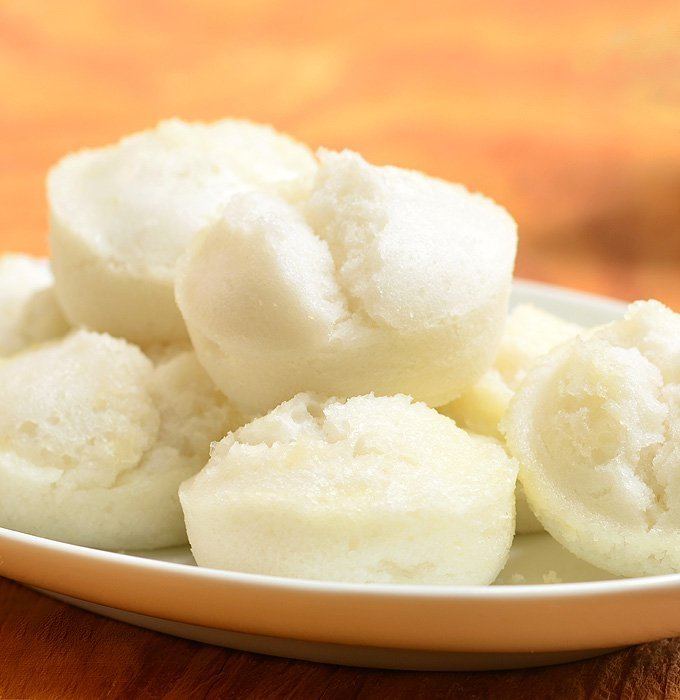Course Dessert, breakfast Variations puto bumbong Place of origin Philippines Main ingredient Rice | Main ingredients Rice Food energy
(per serving) 587 kcal Variation Kue putu | |
 | ||
Serving temperature hot, warm, or room temperature | ||
Puto is a type of steamed rice cake usually served as snack or as accompaniment to savory dishes such as dinuguan or pancit in Philippine cuisine and believed to be derived from Indian puttu of Kerala origin. It is eaten as is or with butter and/or grated fresh coconut, or as an accompaniment to a number of savoury viands (most notably, dinuguan).
Contents
Puto filipino steamed rice cake liz kreate recipe
Preparation
The most common shape of the putuhán or steamer used in making puto is round, ranging from 30 to 60 centimetres (12 to 24 in) in diameter and between 2 to 5 centimetres (0.79 to 1.97 in) deep. These steamers are rings made of either soldered sheet metal built around a perforated pan, or of thin strips of bent bamboo enclosing a flat basket of split bamboo slats (similar to a dim sum steamer basket). The cover is almost always conical to allow the condensing steam to drip along the perimeter instead of on the cakes.
A sheet of muslin (katsâ) is stretched over the steamer ring and the prepared rice batter poured directly on it; an alternative method uses banana leaf as a liner. The puto is then sold as large, thick cakes in flat baskets called bilao lined with banana leaf, either as whole loaves or sliced into smaller, lozenge-shaped individual portions.
The traditional method takes time, although most of it involves inactive waiting periods. The process spans three to four days from the initial rice soaking to taking the finished product out of the steamer.
Taste and texture
Properly prepared puto imparts the slightly yeasty aroma of fermented rice batter with a light whiff of anise. It should be neither sticky nor dry and crumbly, but soft, moist, and with a fine, uniform grain. The essential flavour should be of freshly cooked rice, but it may be sweetened a bit if eaten by itself as a snack instead of as accompaniment to savoury dishes. Since most puto as cooked in the Tagalog-speaking regions may contain a small quantity of wood ash lye and are sometimes steamed and served on banana leaves, some puto aficionados seek these subtle flavours in well-made, traditional puto.
In the last few decades, home cooks and mass producers have experimented with variations in the shape, texture, flavouring and colour of puto. Shortcuts and poor-quality ingredients might have prompted some cooks to introduce foreign flavourings such as vanilla or unusual hues such as pink and electric green to compensate for deficiencies in the pastry's traditional qualities.
Variants
While puto is a common food throughout the Philippines, there are numerous variations by area and family. It is common knowledge that the best-tasting rice is that which is newly harvested followed by rice from the previous harvest, and a common method to improve its flavour is to include a knot of Pandanus amaryllifolius (pandán, "screwpine") leaves in the pot. However, since there seems to be common agreement that aged rice is more suitable for making puto, this fresh flavour is therefore absent and it is necessary to use water in which pandán leaves have been steeped.
The most common version of Puto Recipe is the one shaped like Cupcakes with a log of Cheese on top. Puto comes in a variety of flavors and colors. The most popular ones are the Cheese Flavored Puto and the Salted Egg-Topped Puto. During special occasions in the Philippines, one might see some Puto without the Cheese on top and what’s left is the groove from it
Certain towns of the Philippines, most notably Biñan City, Laguna; Valenzuela City, Calasiao, Pangasinan and Manapla, Negros Occidental have excelled in the production and marketing of their particular style of puto that their names are used to identify the variety.
